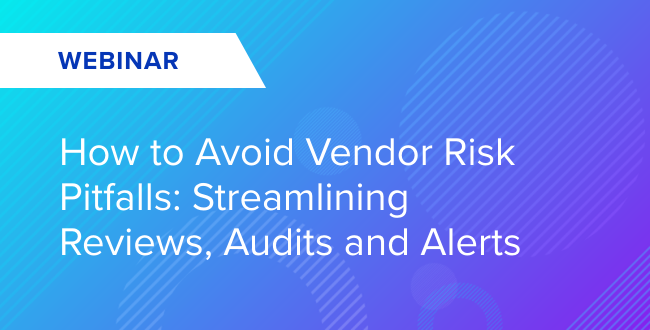The Cybersecurity Risks of Digital Transformation
Digital transformation is essential for all businesses, especially if you want to streamline your process for achieving your business goals and KPIs. Incorporating digital technologies into your enterprise helps you scale operations, meet market requirements, and provide better customer experiences.
The problem is that digital transformation often leads to cybercrime, which feeds on new and vulnerable technologies like artificial intelligence, machine learning, and SaaS tools. These technologies require sharing sensitive business data with vendors and other partners, which can result in phishing attacks, software supply chain attacks, cyberextortion, identity fraud, and stolen financial and payment card data.
Let's discuss the link between digital transformation and cybercrime, and how a solution for vendor risk assessment provides peace of mind.
Digital transformation, explained
Digital transformation is the process of investing in technologies to create new business processes and experiences. It's an all-encompassing term that means different things to different businesses but might involve:
- Implementing new digital tools like software and mobile applications to improve customer or sales outcomes
- Using machine learning algorithms to generate real-time business insights
- Purchasing new infrastructure like servers and data centers to enhance day-to-day IT processes
Global digital transformation spending is estimated to total $1.8 trillion in 2022 and rise to $2.8 trillion in 2025 — a more than 55% increase in just four years.

The link between digital transformation and cybercrime
Digital transformation involves working with multiple partners that deliver digital tools and infrastructure to your organization. These partners might include software vendors that develop and sell solutions like customer relationship management (CRM) systems, enterprise resource planning (ERP) systems, SaaS tools, and other data platforms.
Unfortunately, not all vendors care about security as much as you do, which opens up your business cybersecurity threats. Due to the enormous demand for new software — experts predict the global business software and services market revenue will reach $813.4 billion in 2028. Due to this, some vendors might skip testing and quality assurance protocols when developing new products, resulting in software with serious security vulnerabilities. Other vendors might not update their products with the latest security patches and fixes, potentially exposing your data to bad actors.
Another problem is the speed at which digital transformation happens in many enterprises. Some companies — eager to implement new technologies for rapid growth — don't thoroughly research vendors and end up with 'bad' software that could jeopardize their business operations.
A recent example of the potential dangers of digital transformation is the much-publicized SolarWinds hack — a software supply chain attack that impacted thousands of computer systems, including those at the highest levels of government. System users who purchased SolarWinds' Orion management software for digital transformation inadvertently downloaded malicious code when updating the tool, resulting in stolen data and compromised networks. In this case, the vendor was responsible for a critical lapse in security.
How to improve cybersecurity during digital transformation
Digital transformation can benefit your company in multiple ways, but you should be wary of any vendors you work with since you may still be vulnerable to various cybersecurity risks. Assessing vendor security risk is the easiest way to achieve this goal.
Privva's vendor risk assessment management solution facilitates a simple two-step process for improving vendor security during digital transformation:
- Catalog existing vendors with access to your sensitive data based on risk. Privva can use any existing risk assessment in your organization to catalog vendors or create a custom solution.
- Evaluate future vendors before they gain access to your data. Privva evaluates the risk profiles of vendors during the evaluation, contracting, and implementation stages of digital transformation.
Companies often forget about vendor security when investing in digital transformation. The truth is that cybersecurity risks increase when implementing new software and infrastructure into your organization, potentially resulting in data breaches, malware, software supply chain attacks, and other threats. Using a vendor risk assessment management solution such as Privva can solve this issue.
Share this post!
Smarsh Blog
Our internal subject matter experts and our network of external industry experts are featured with insights into the technology and industry trends that affect your electronic communications compliance initiatives. Sign up to benefit from their deep understanding, tips and best practices regarding how your company can manage compliance risk while unlocking the business value of your communications data.
Ready to enable compliant productivity?
Join the 6,500+ customers using Smarsh to drive their business forward.





Subscribe to the Smarsh Blog Digest
Subscribe to receive a monthly digest of articles exploring regulatory updates, news, trends and best practices in electronic communications capture and archiving.
Smarsh handles information you submit to Smarsh in accordance with its Privacy Policy. By clicking "submit", you consent to Smarsh processing your information and storing it in accordance with the Privacy Policy and agree to receive communications from Smarsh and its third-party partners regarding products and services that may be of interest to you. You may withdraw your consent at any time by emailing privacy@smarsh.com.
FOLLOW US